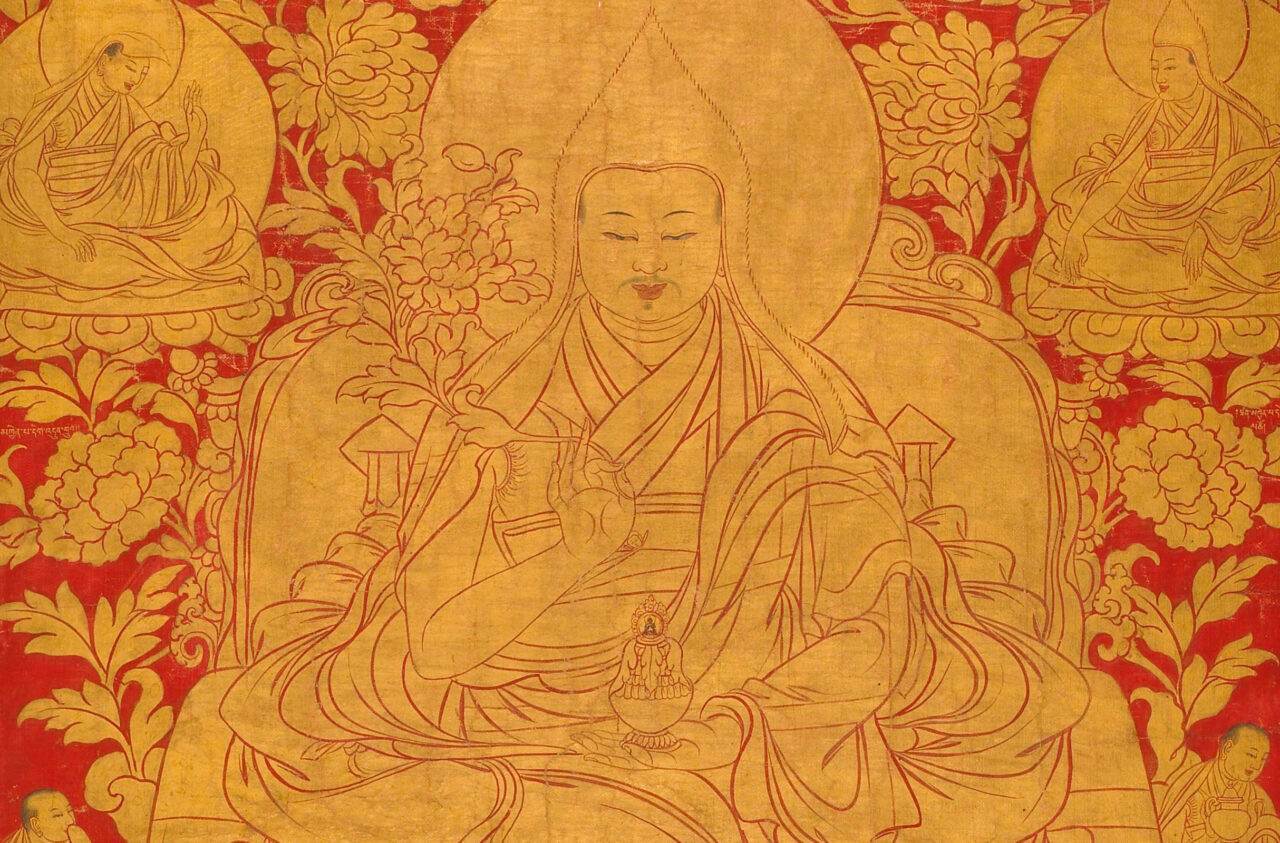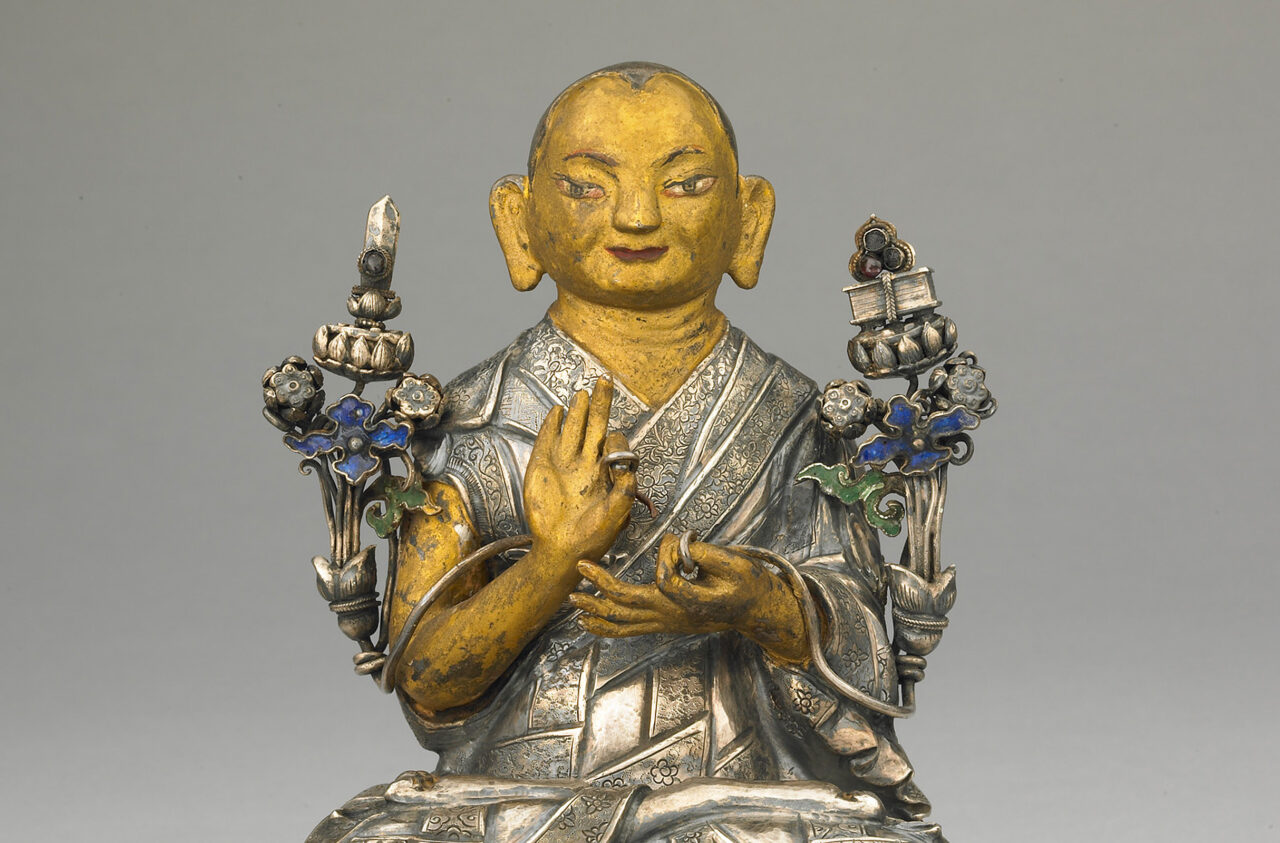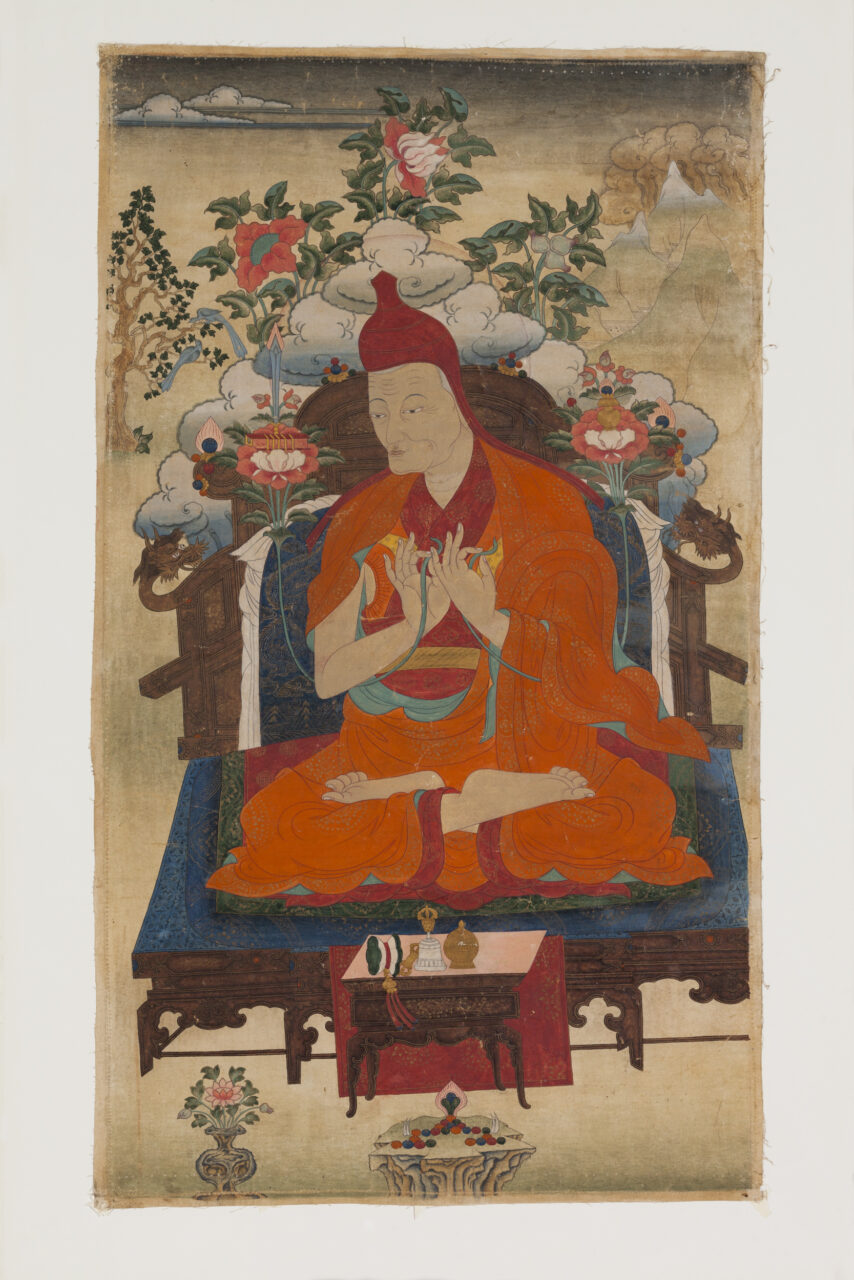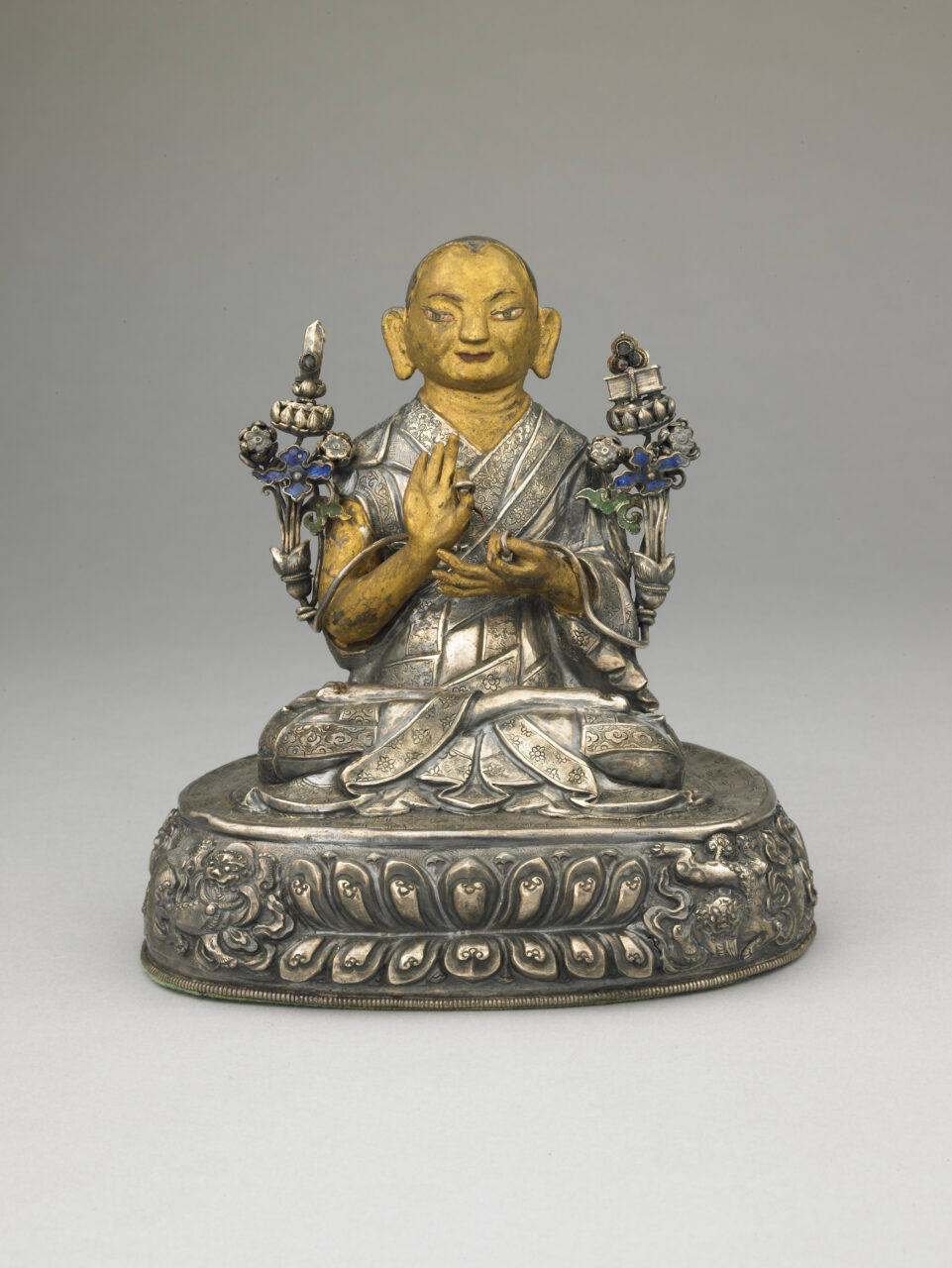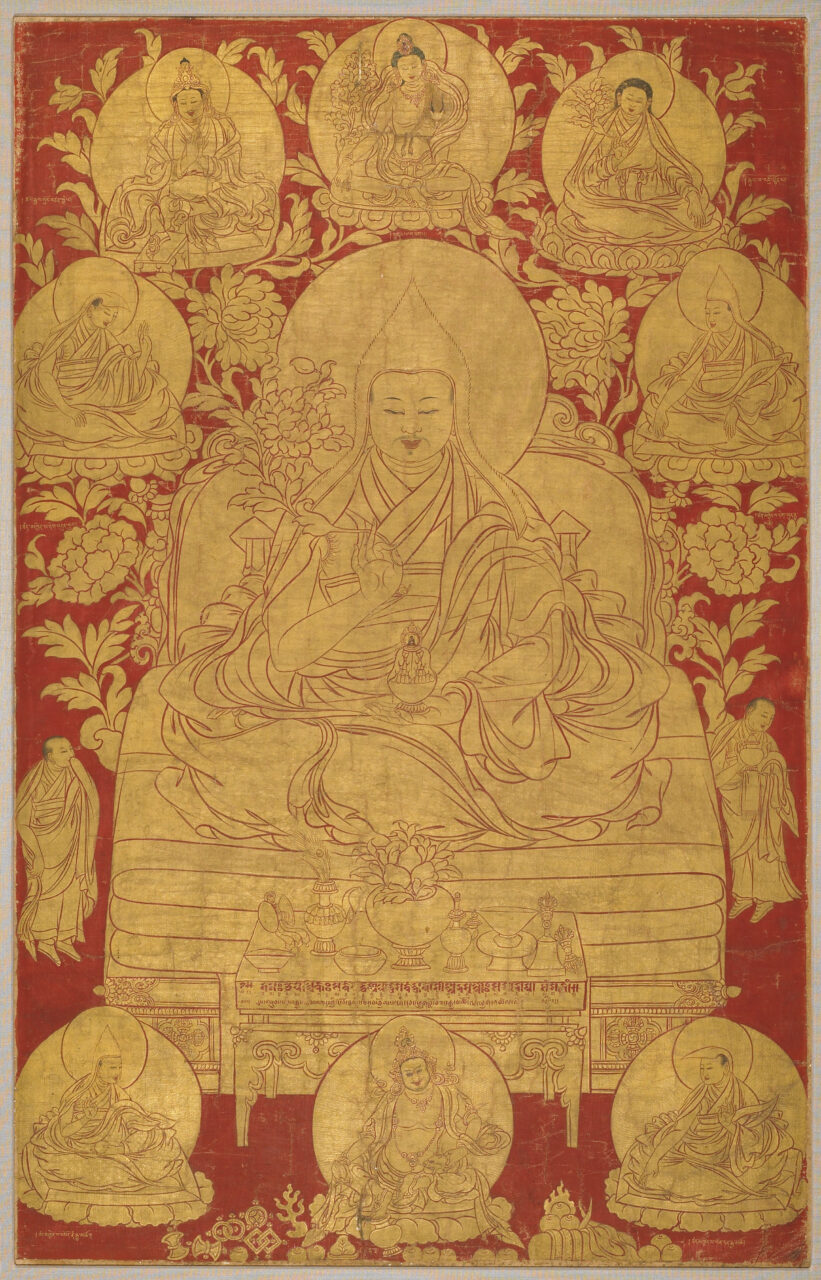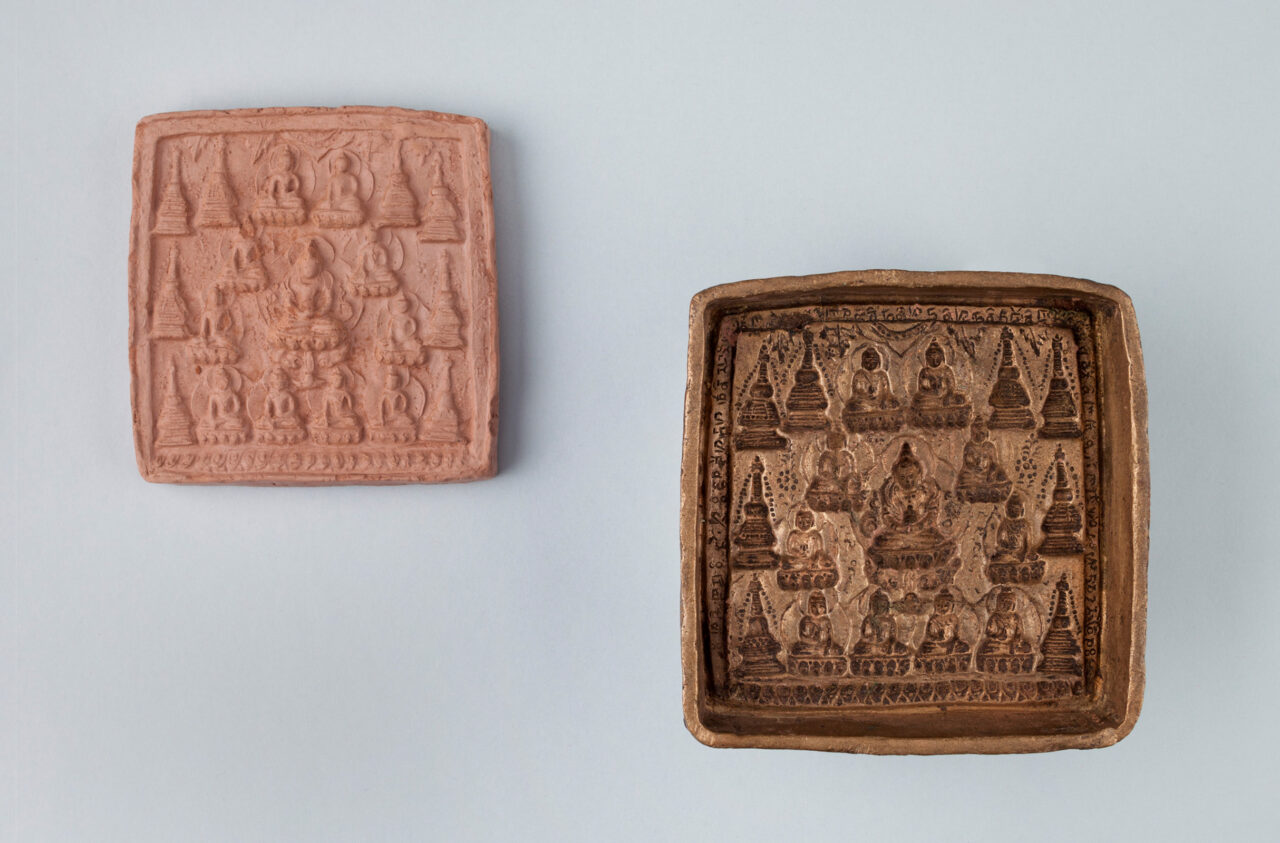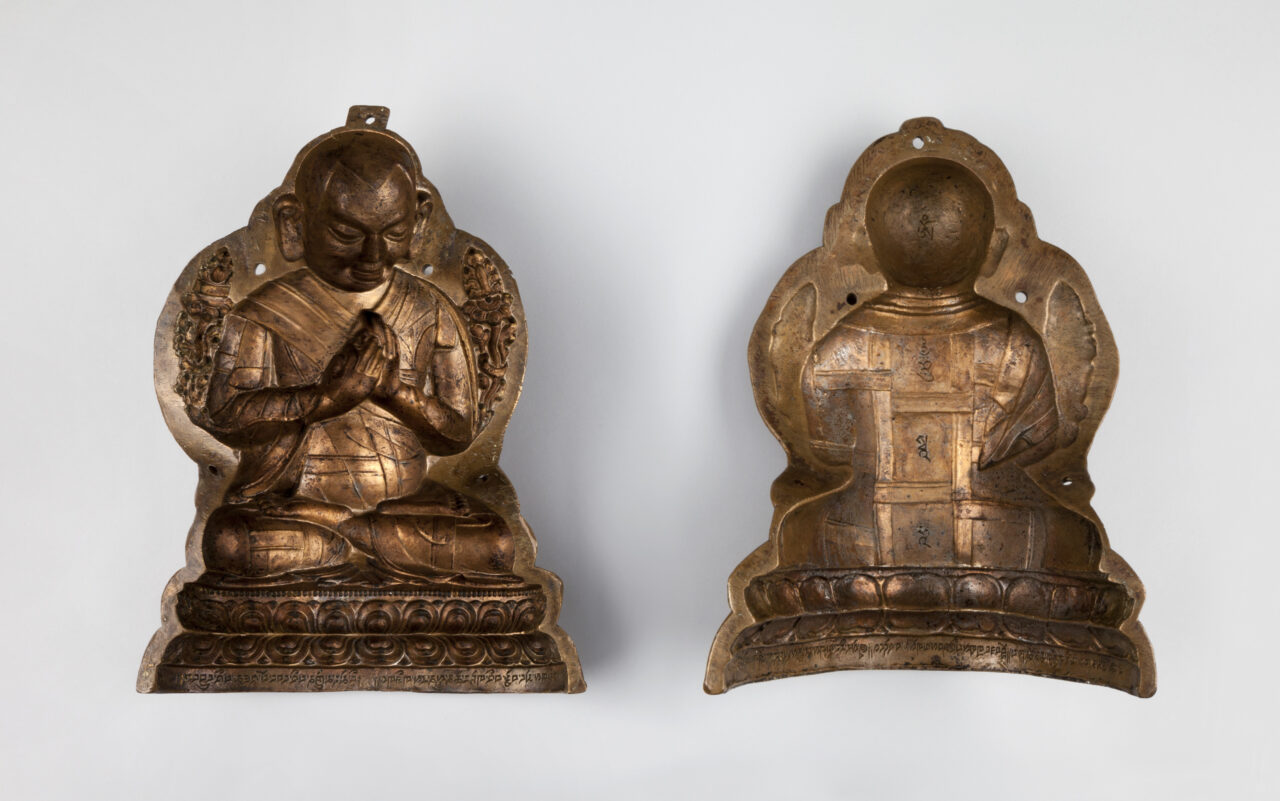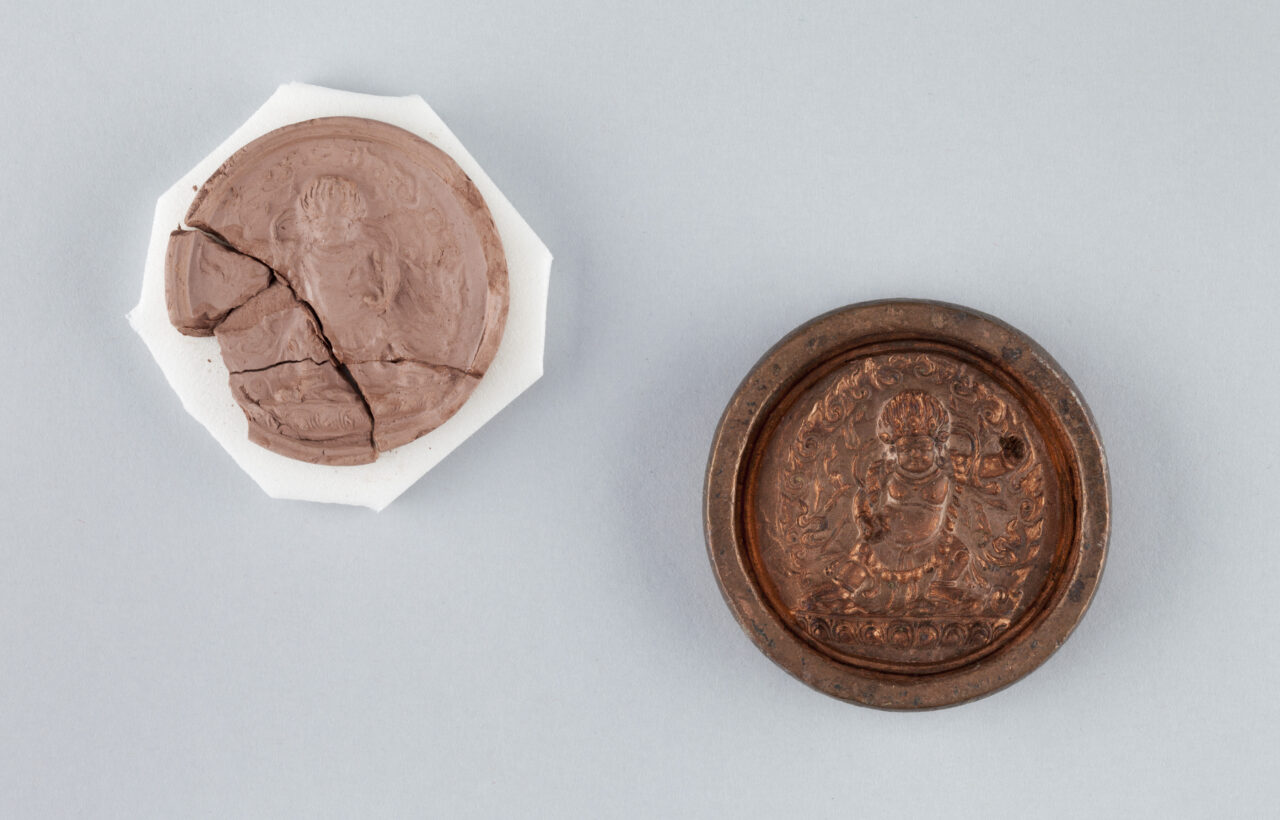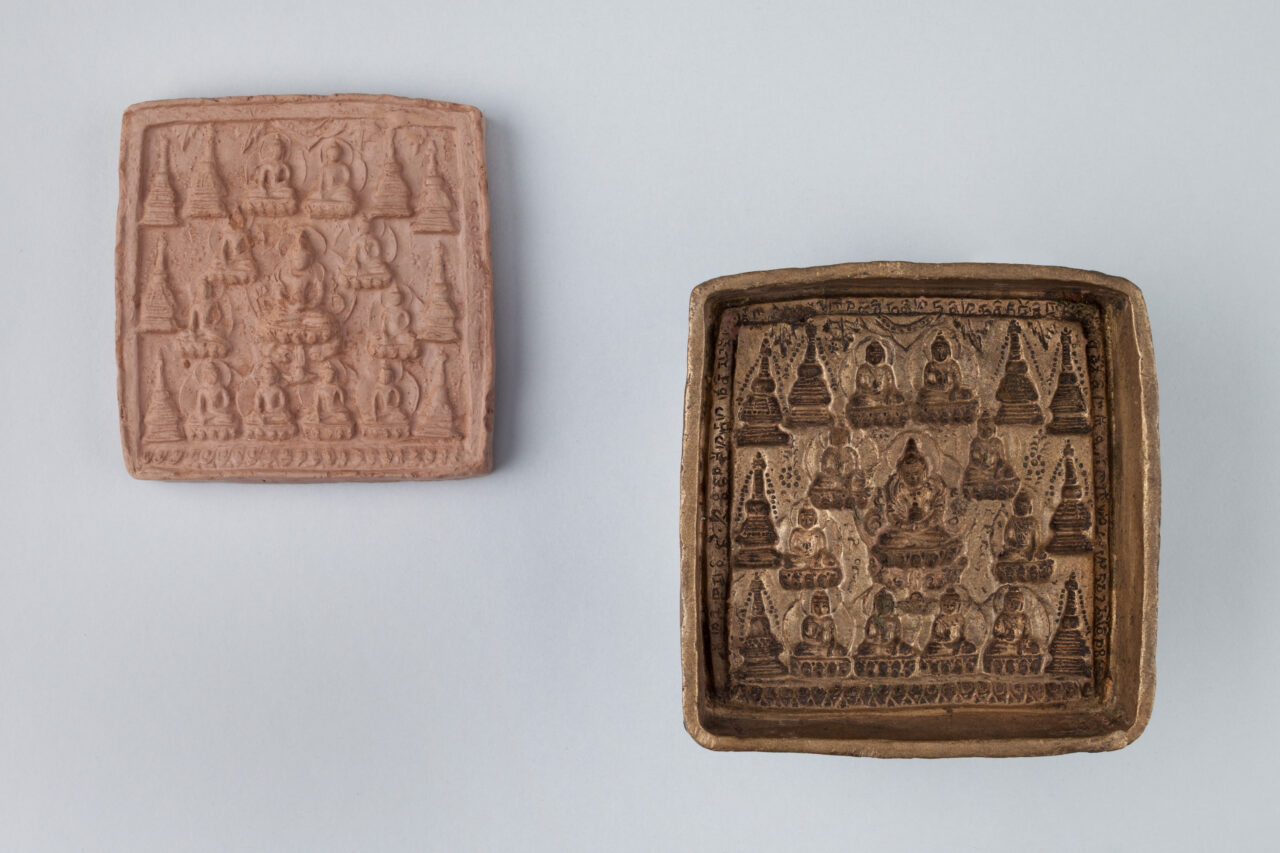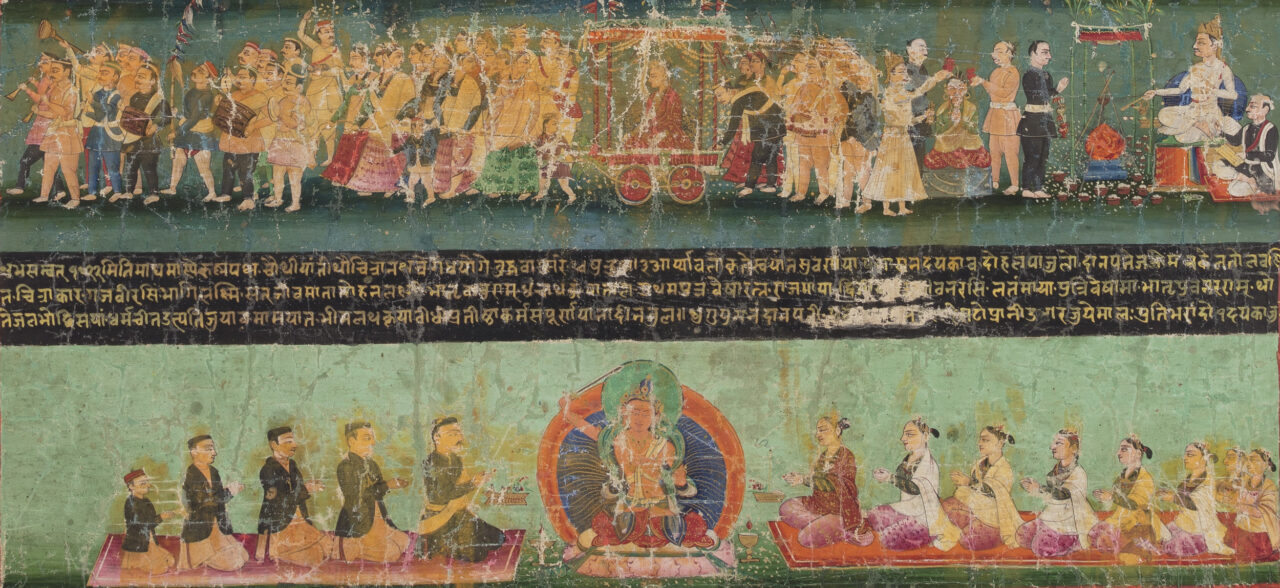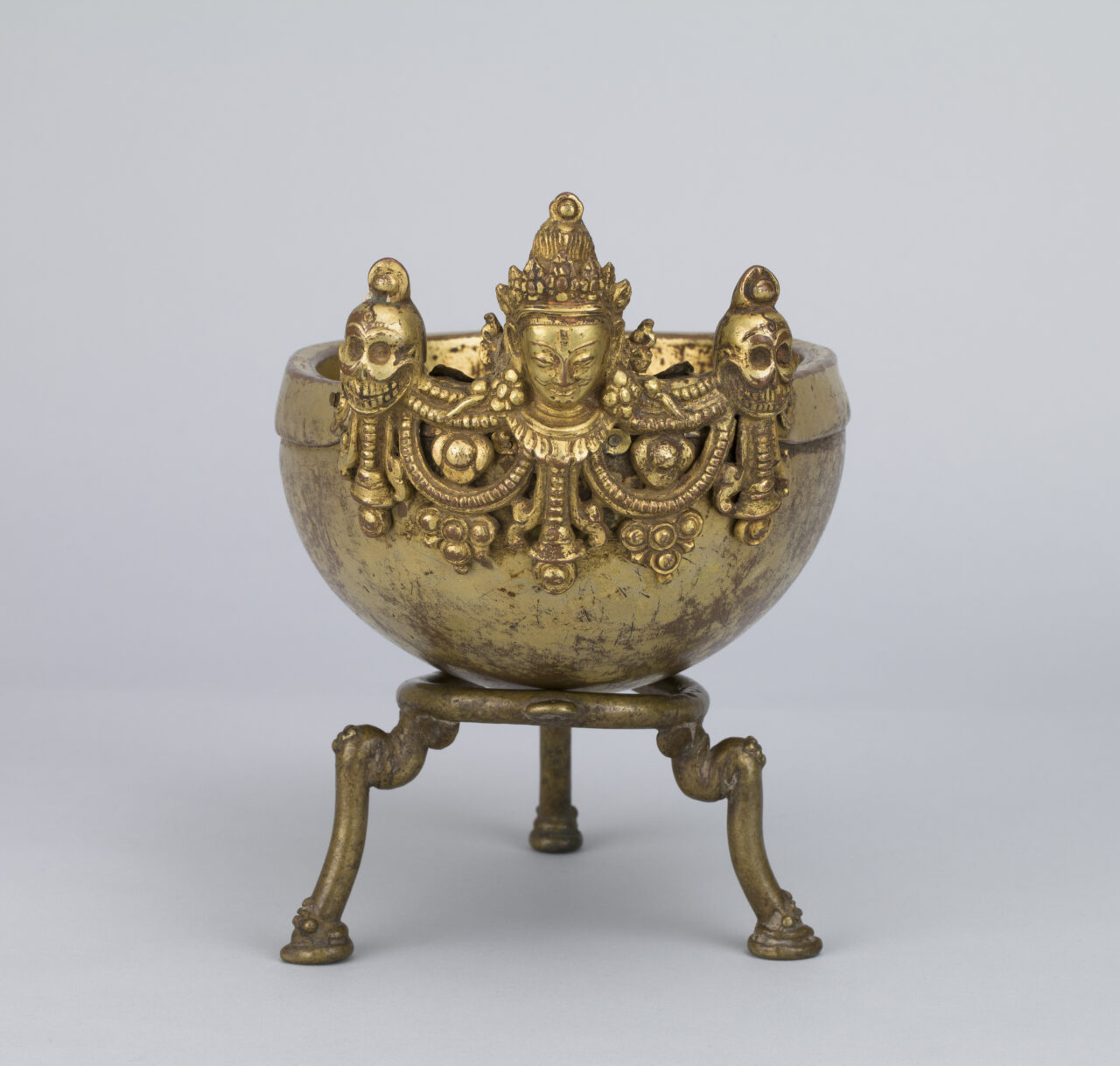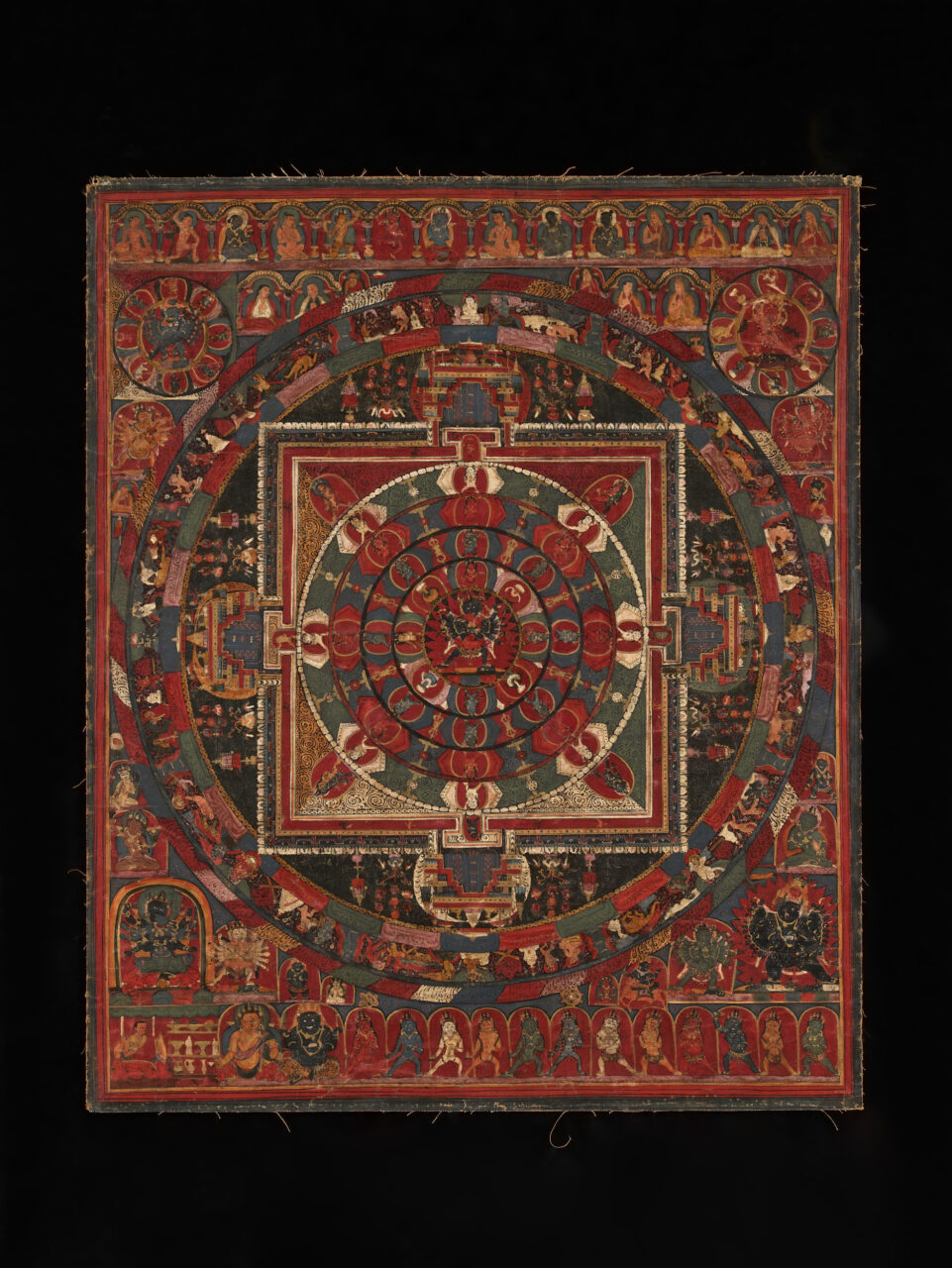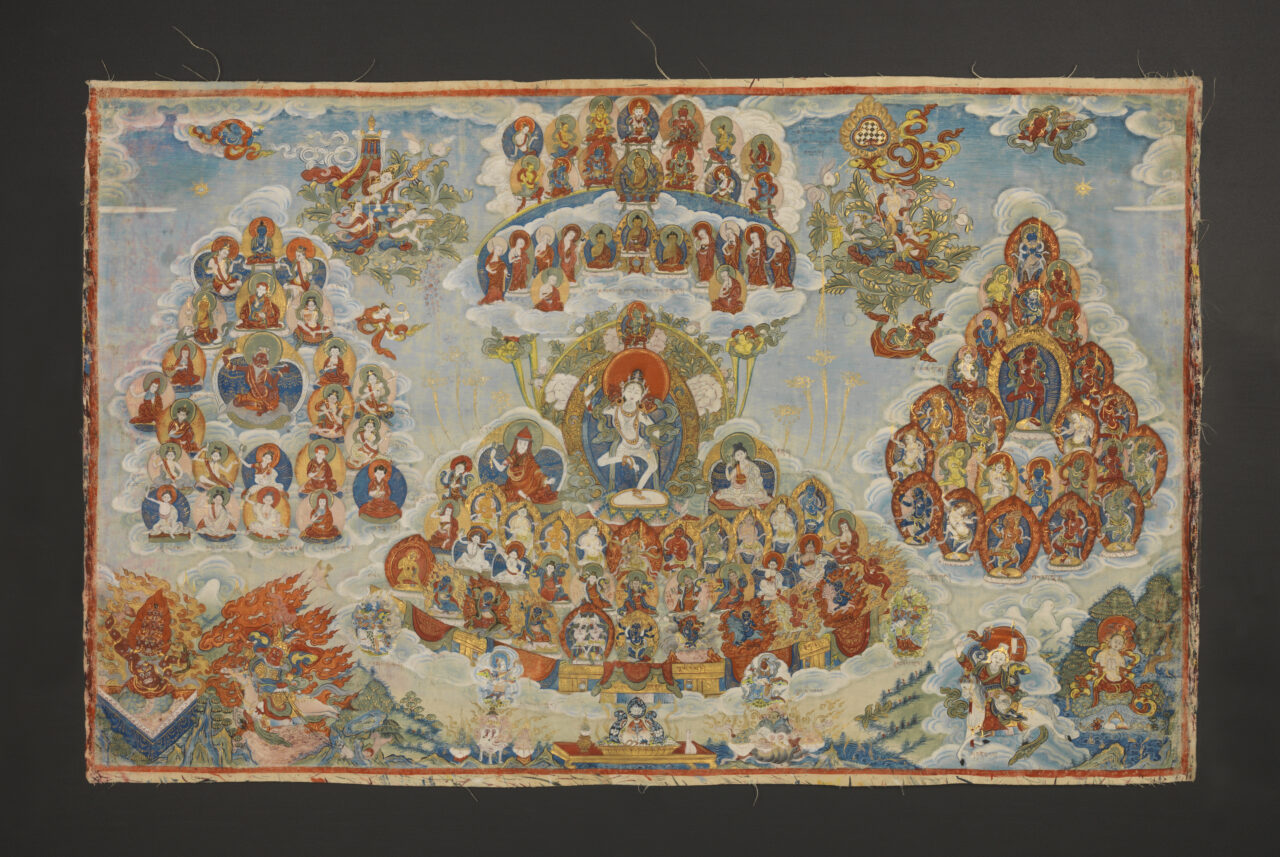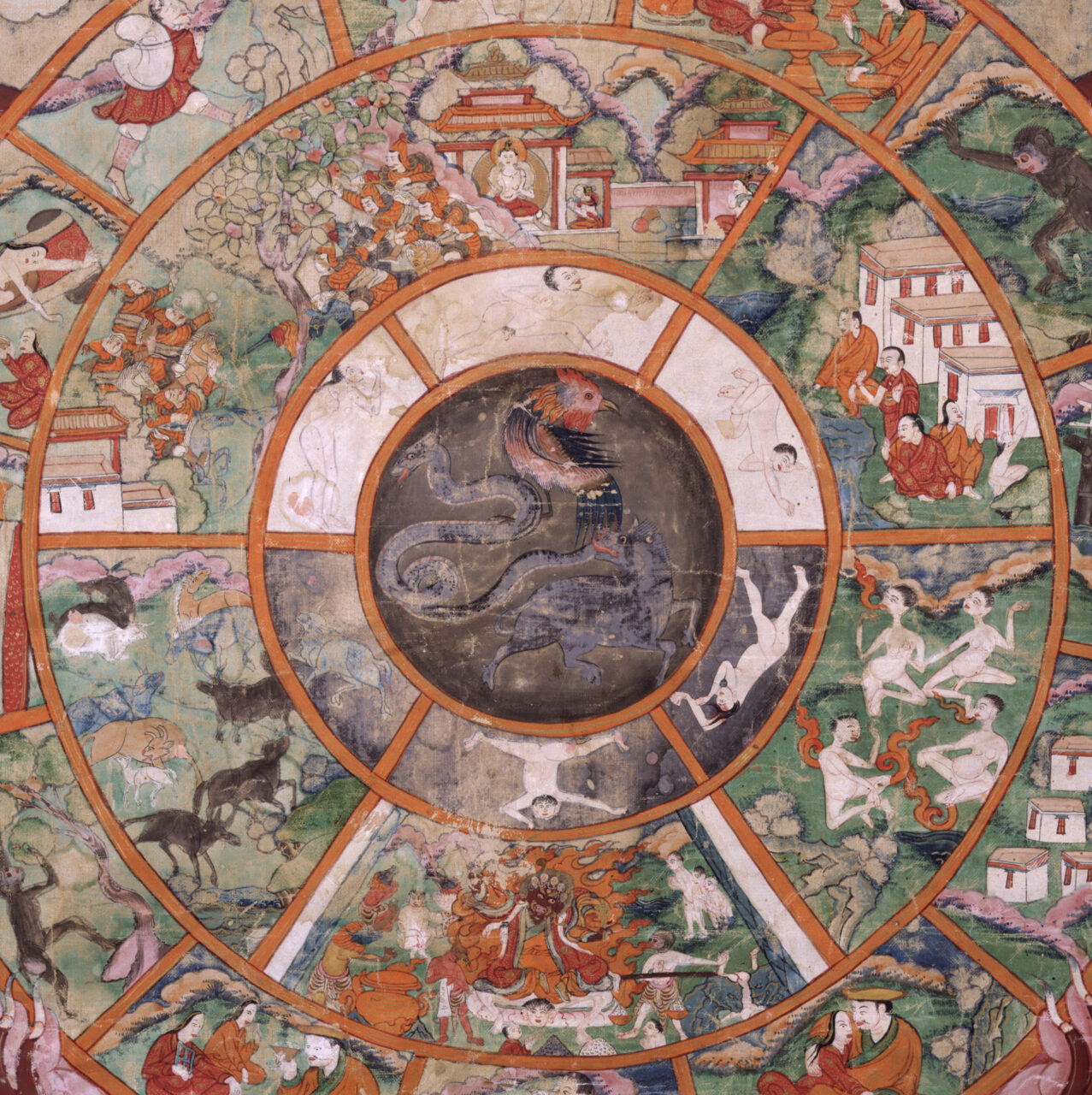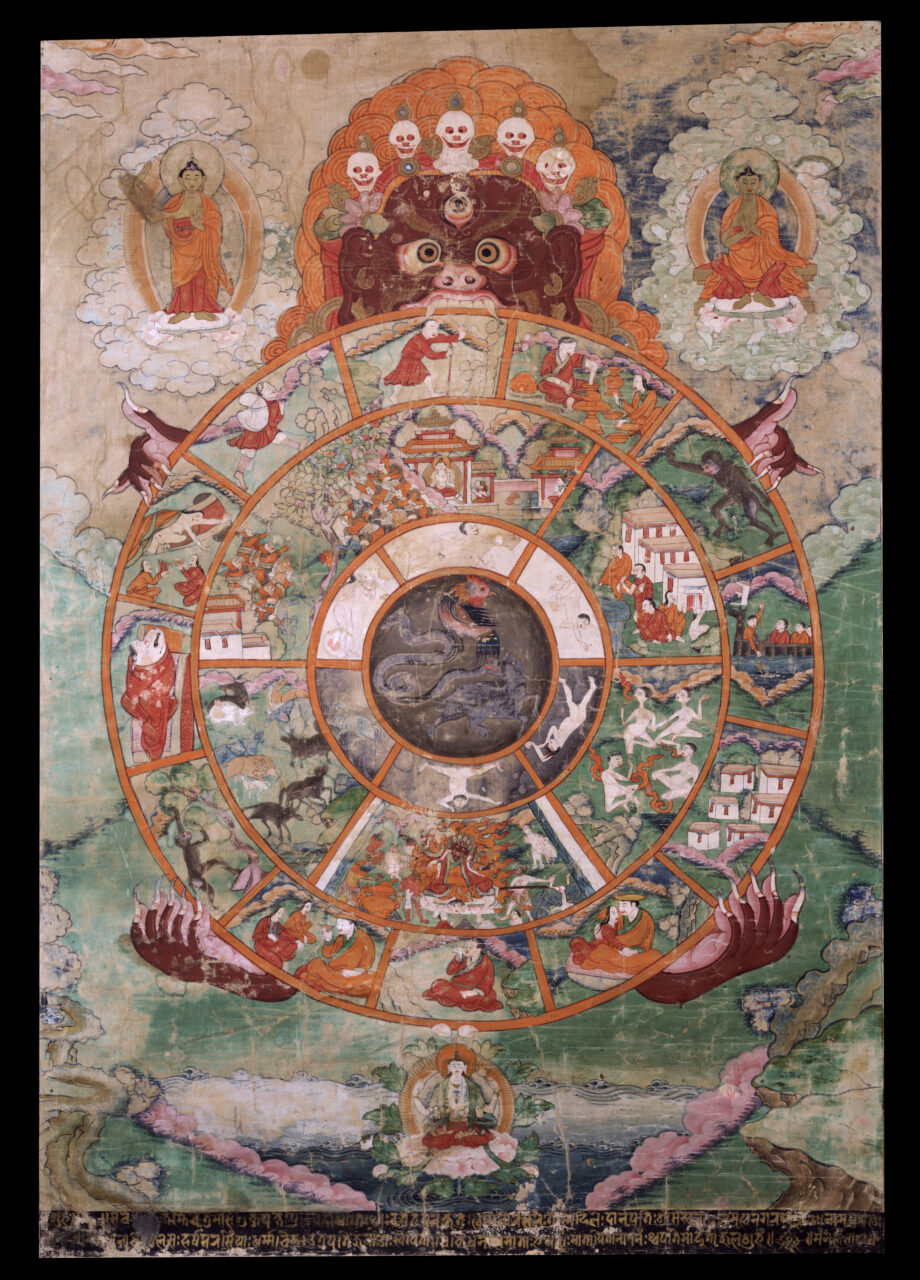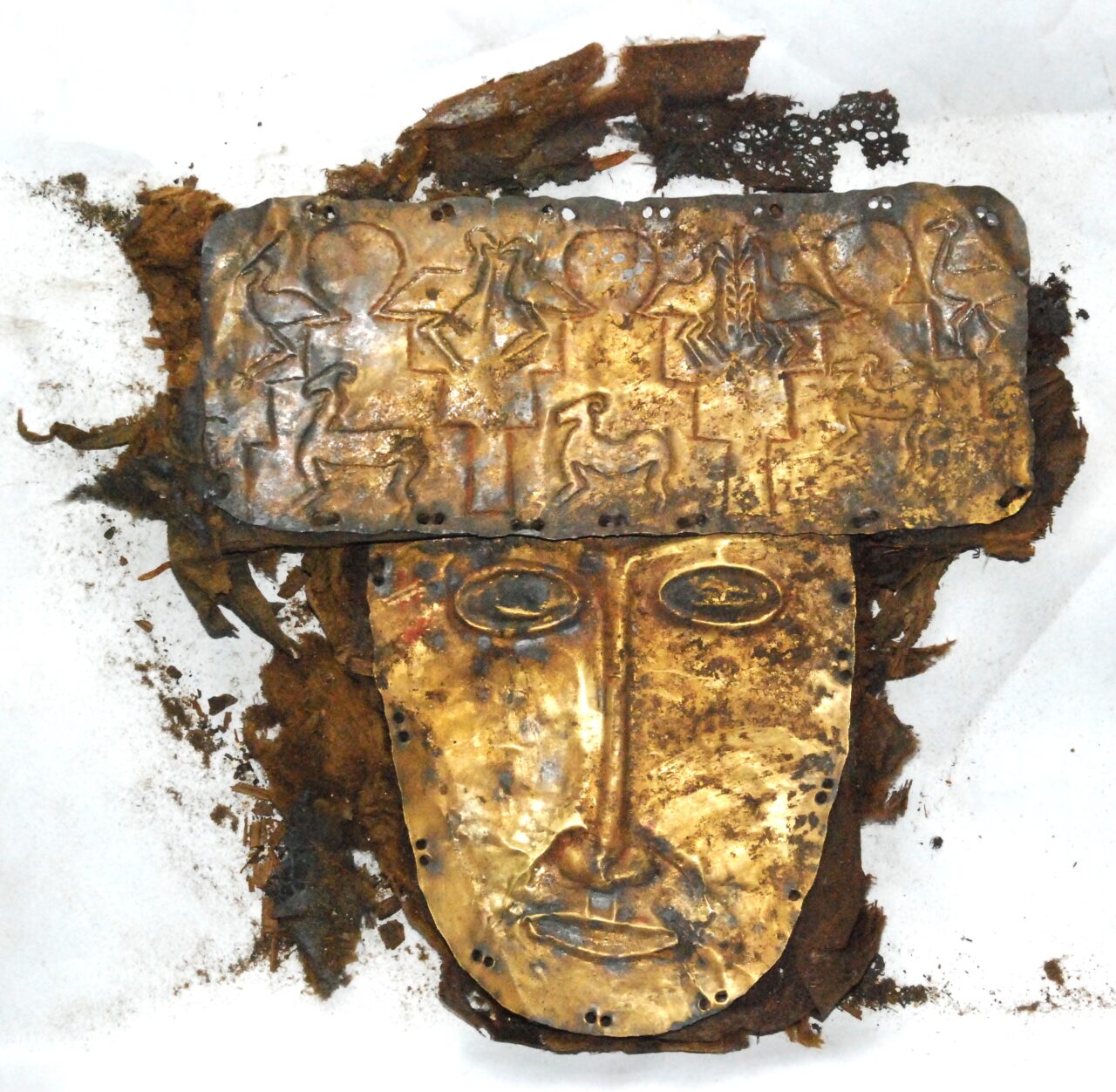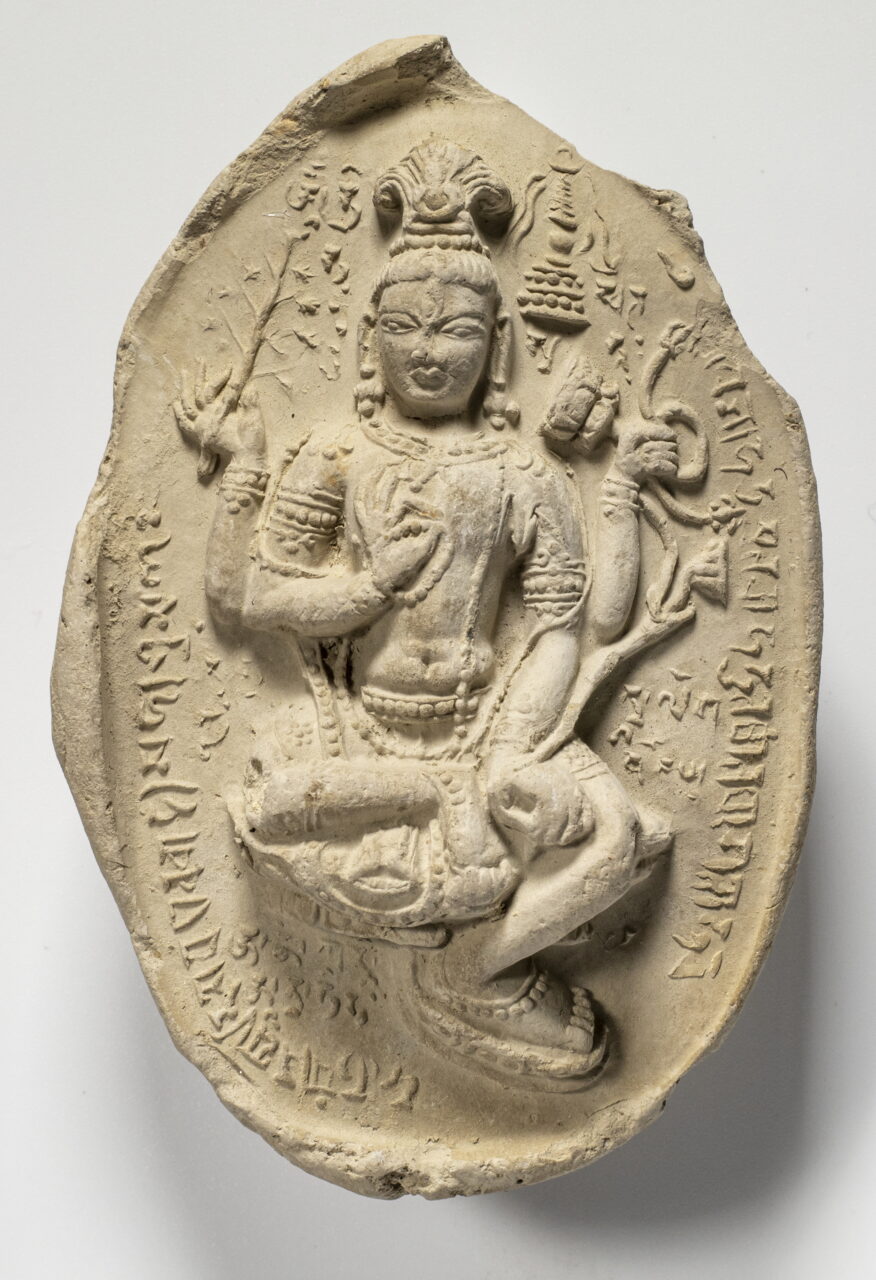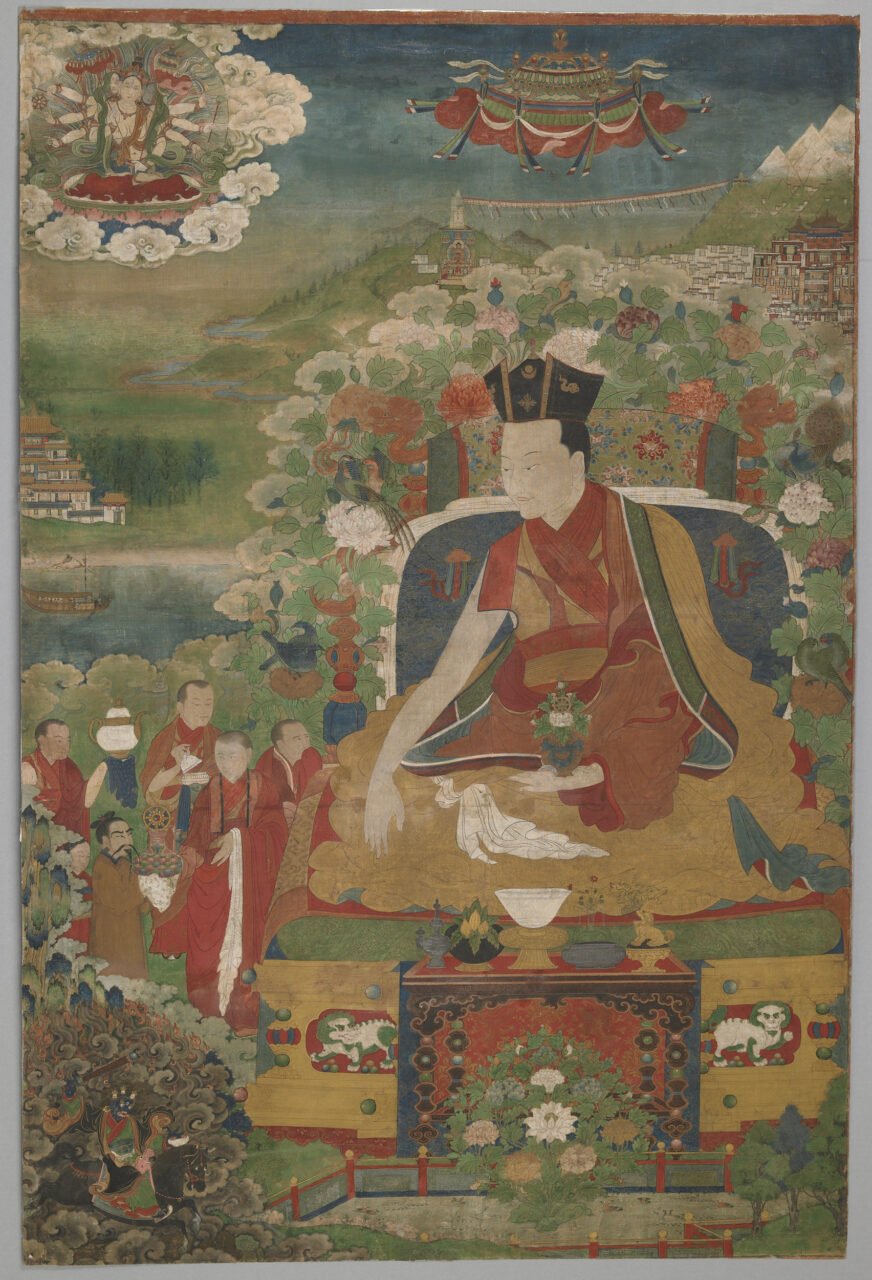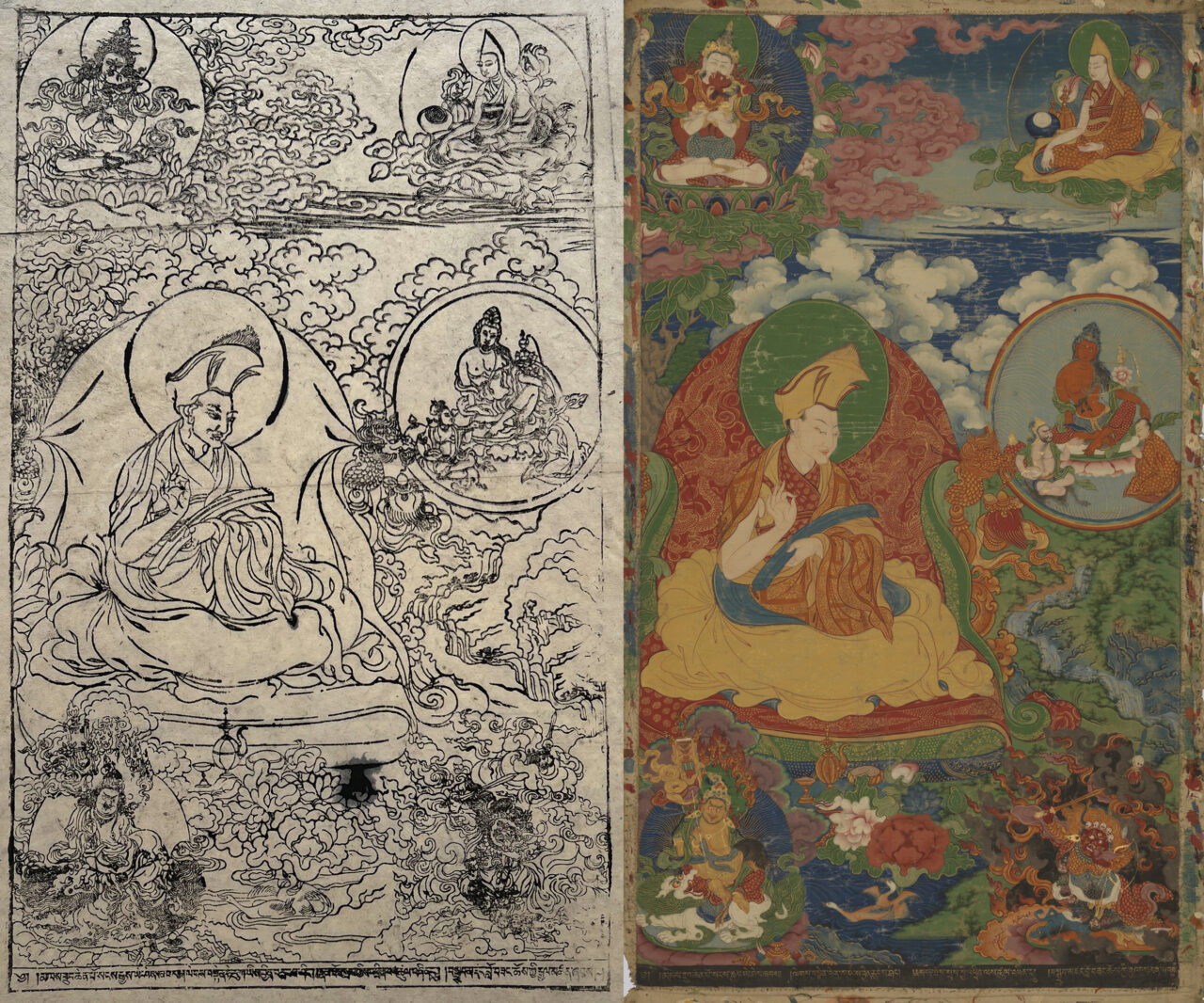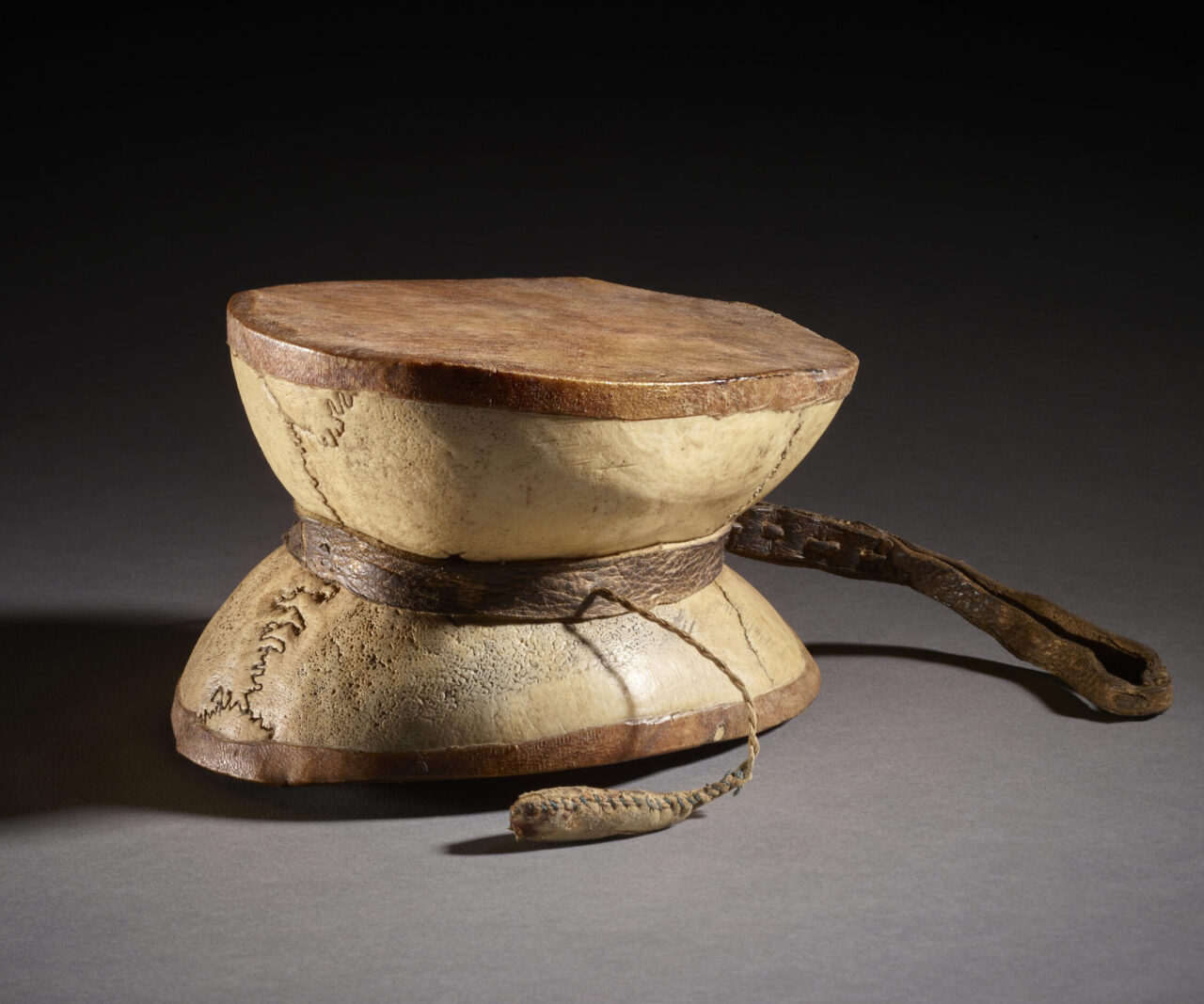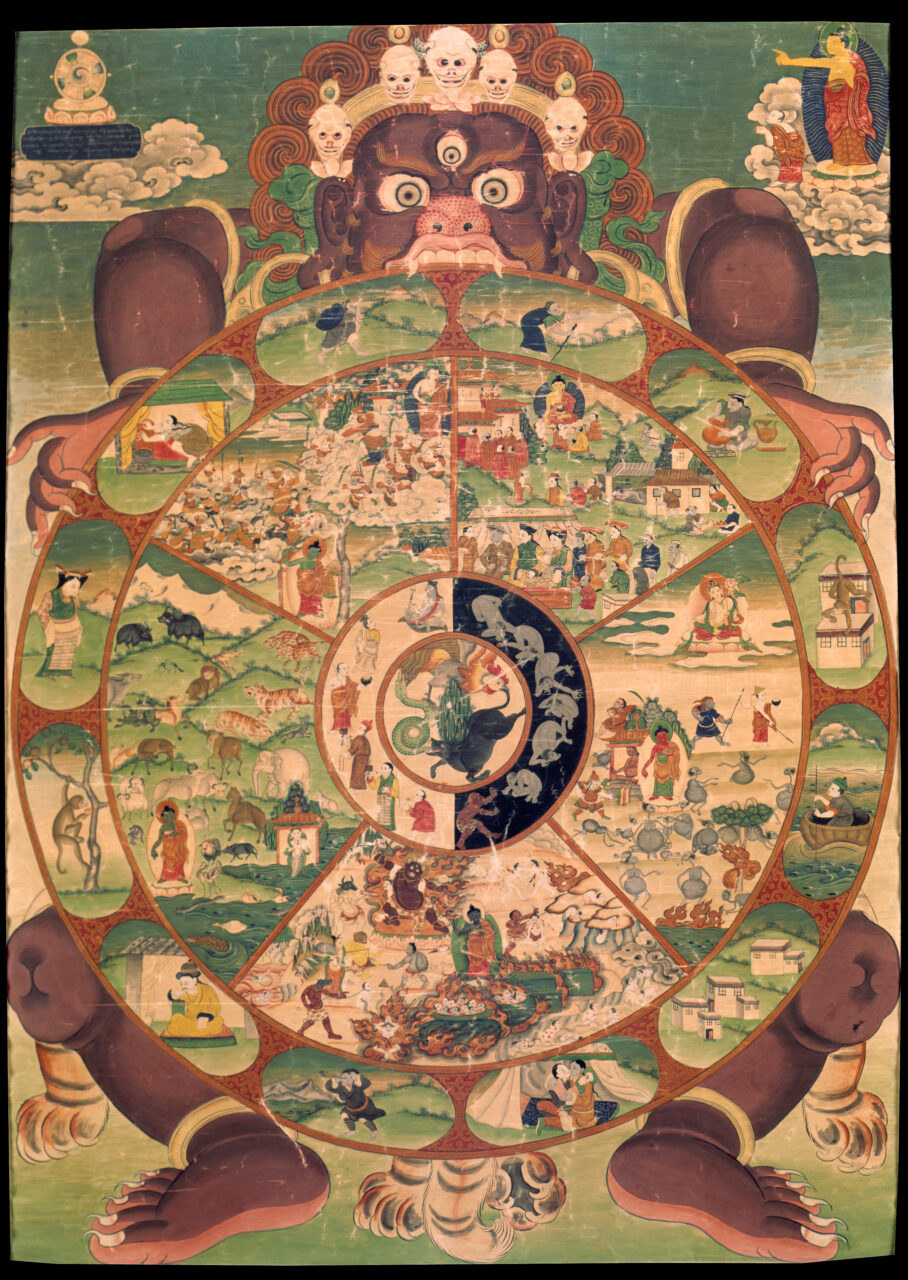Benjamin Bogin
Associate Professor, Director of Asian Studies Program
Skidmore College
Funerary rituals play a central role in the religious traditions of the Himalayas and some of the earliest artifacts from the region focus on death and the afterlife. In Tibetan Buddhism, contemplation of death is seen as a key to gaining freedom from the endless cycle of death and rebirth.
The exhibition includes several objects related to this topic, including:
- Materials used for the production of molded images (tsatsas), which are often made to commemorate a deceased loved one (and sometimes made from clay mixed with the ashes of a deceased).
- Paintings devoted to figures such as Machik Labdron who developed a unique meditation system focused on the visualized offering of one’s own corpse as a way to cut through attachment.
- Portraits of a special class of Buddhist teachers known as tulkus who are said to have gained mastery over the process of death and rebirth and indicate the time and place of their intentional rebirths.
Exploring Himalayan perspectives on death and rebirth through objects such as these offers rich opportunities for learning about Himalayan religions and engaging with students’ own views on death.
